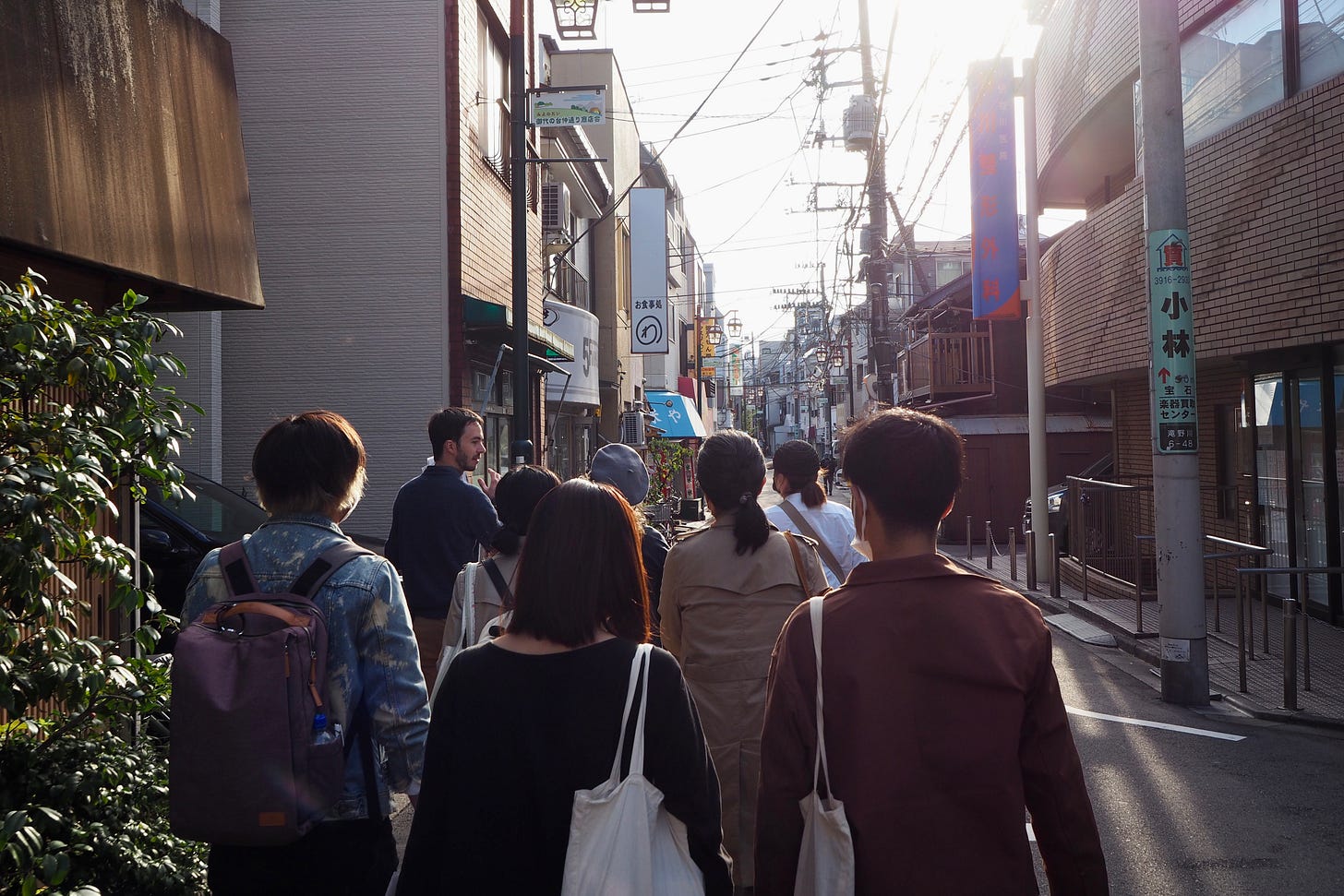Tokyo tours
I offer historical walking tours of Tokyo for medium-to-high context residents and travelers. Each route goes deep into themes related to my projects, and is rooted in my personal experience of the city, academic background in urban studies, and years of local research.
Fill out this form to be added to the mailing list for future group tours (once every 1~2 months), or email me if you are interested in a private tour.
Sento tour: bathhouses and the origins of a Tokyo neighborhood
18th-20th centuries | Sengoku→Sugamo→Takinogawa
More than 2,600 public baths were once spread across Tokyo, anchoring small neighborhood networks of residences, shopping streets, and common spaces. This tour begins in my local neighborhood and follows the path of the old Nakasendo to Inari-yu, the public bath and cultural property in Takinogawa that I have been involved with since 2020. More than five years of community building and local research contribute to a rich historical narrative of everyday life that shifts between Edo, the early 20th century, and today. We end at Inari-yu and Inari-yu Nagaya, where we can bathe and enjoy drinks (around 7,000 steps)
Read the introduction to the walk here:
Postwar Tokyo tour: firebombing, black markets & occupation
1657, 1923, 1945-1950s | Ryogoku→Akihabara→Yoyogi→Omotesando→Akasaka
This walk explores the destruction and the aftermath of 1945 in three chapters: firebombing, black markets, and occupation. In the morning we begin in Ryogoku, at the center of firebombing destruction and memorialization, and cross the river to explore a seam of shitamachi streets that survived the air raids. Arriving in Akihabara, we discuss the black market roots of the subculture mecca and visit the old train station at Manseibashi. After lunch, we catch the metro across town to walk through neighborhoods shaped by the American occupation and postwar culture. We finish at Tokyo Little House to view some of the collection of rare occupation-era books and magazines over coffee (~16,000 steps).
Spiritual topography of vanquished Tokyo
Prehistory-19th century | Otemachi→Imperial Palace→Ochanomizu→Yushima→Ueno Park
This walk follows the edge between Tokyo’s western hills and eastern lowlands from the Imperial Palace (Edo Castle) north to Ueno Park with one short subway hop, linking around ten diverse spiritual landmarks. I introduce these sites through two distinctive and enduring aspects of Tokyo’s urban history and geography: the connection of spiritual power to topography, and the veneration of defeated figures in the thrice-occupied city. This tour is good if you are interested in Tokyo’s deep origins and long-term evolution and visits some of my favorite places in the city (~12,000 steps)

